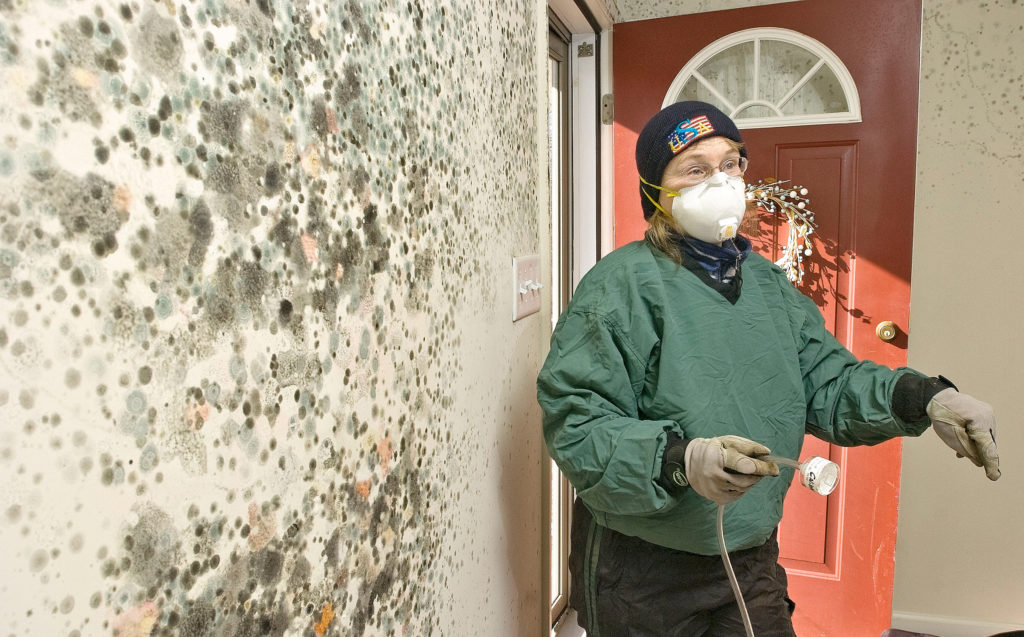Let’s say you’ve had a recent outbreak of mold in your home. Maybe a pipe broke and sprayed water everywhere, or your roof may have had a leak.
Whatever the reason, mold spores found new life in the extra moisture inside your home, and started to grow rapidly.
You’ve cleaned and dried up everything you can, and you’ve used multiple dehumidifiers to remove the moisture from the air.
Now you notice that the mold isn’t growing anymore. It’s dried up and turned flakey. This means that it’s dead and you’re in the clear now, right?
Unfortunately, it’s not that simple.
Dormant and Potentially Dangerous
Dried out mold does in fact stop growing actively when the necessary components for its survival are removed. Mold thrives in environments that are heavy with:
- Moisture
- Oxygen
- Food
- Warmth
Freezing temperatures, for example, provide an extremely harsh environment for mold to survive in. However, dried up mold does not disappear when these components are removed. It stops growing, and simply stays where it is.
So then the question becomes, is dried up mold dangerous?
The simple answer is yes.
The mold is not dead, simply lying dormant. Think of the mold colony as if it is in hibernation, like a bear for the winter. And we all know the saying about poking a sleeping bear.
If exposed to any of the necessary components for survival, mold can quickly reactivate. Once active again, the mold will begin releasing spores to spread and grow further. If the spores find another wet surface to land on, it will begin to spread even more rapidly.
These spores are fairly dangerous if inhaled by humans. Our bodies are naturally moist and warm areas for spores to set into and grow, which can cause all sorts of medical issues.
Removal Is Necessary
Having a patch of mold growing in your home has already been stated to be dangerous. But just how dangerous?
Spores that we breathe in can grow inside our bodies and cause multiple symptoms. People who have mold allergies are particularly at risk.
If you have a high concentration of mold, you may smell it. If you detect the typical musty odor, check for mold on damp carpets, damp walls, damp crawlspaces and wet wood under your floors, wet roof sheathing and other damp areas. But you don’t have to worry. The best thing you can do is to call Tip Top Restoration and we will send you our best mold removal team to fix you problem! If you have any question about our work and our services, do not hesitate and get in contact with us. Our methods are professional and our personnel is high qualified for any kind of mold removal situation. Trust the very best, trust Tip Top Restoration: you won’t be sorry.







